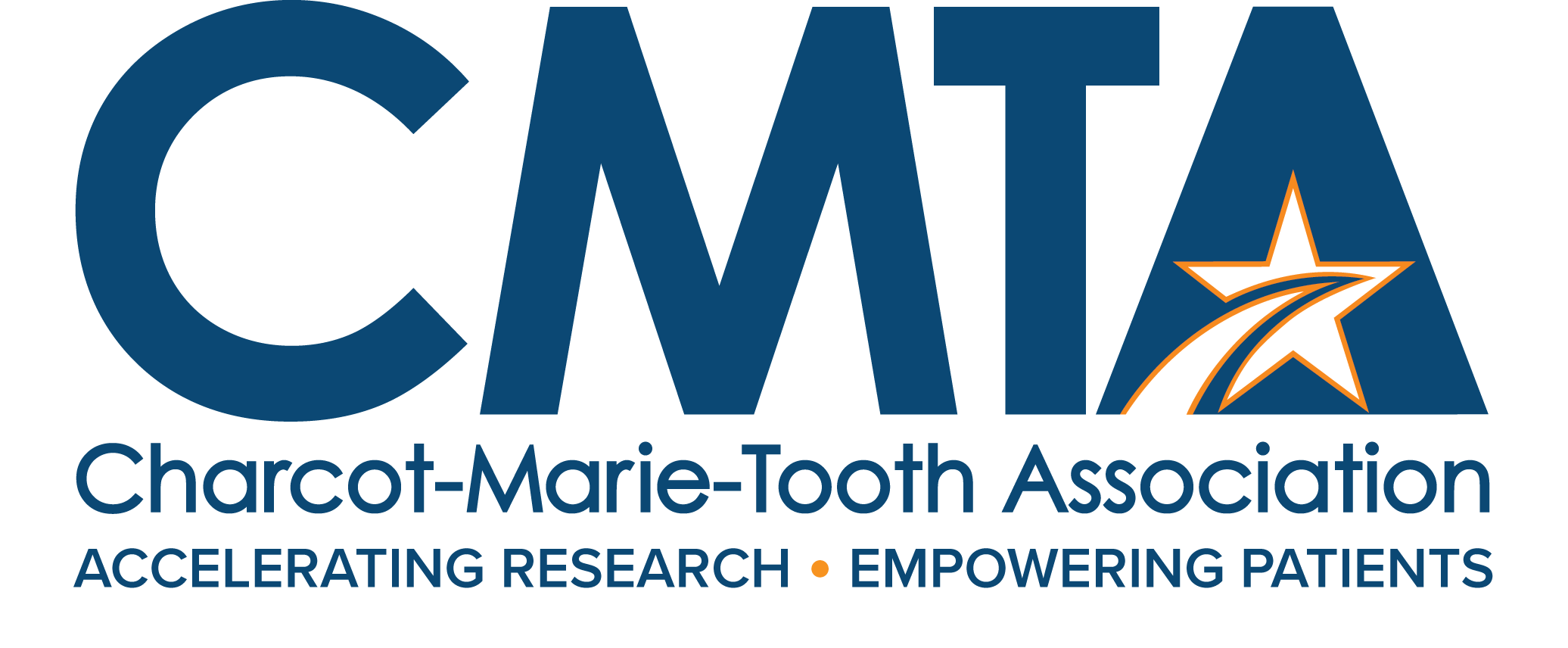What is a Neurotoxic Medication?
Neurotoxicity is the capacity of chemical or biologic agents to induce functional or structural changes in the nervous system resulting in tissue injury. There are many substances that produce damage to normal peripheral nerves, including heavy metals such as lead, arsenic, mercury and thallium, and drugs such as vincristine, thalidomide and pyridoxine. The mechanism in each of these substances is different and in some of them, the exact mechanism is unknown. If these substances damage normal nerves, patients who already have a nerve disease, either hereditary as in CMT or acquired in diabetes, are more susceptible to these substances. The more severe the neuropathy, the more susceptible the patient to the exposure of the neurotoxin.
Information about General Medications & CMT
2023 Update to the CMTA’s Neurotoxic Medication Advisory
The Charcot-Marie-Tooth Association (CMTA) recognizes the CMT community’s desire to have access to information on possible neurotoxic side effects of commonly used drugs. For over 15 years, the CMTA has published neurotoxic medications lists based on the available data and guidance of clinical professionals. Clinical and scientific knowledge advances over time and in 2022, the CMTA commissioned a new review to enable an evidence-based update of the list. The 2022 systematic review was conducted by Guido Cavaletti, MD, and Paola Alberti, MD, PhD with editorial support from Katherine Forsey PhD, the CMTA’s Chief Research Officer. Cavaletti is a professor of human anatomy at the School of Medicine and Surgery, University of Milano-Bicocca, and Chair of the Toxic Neuropathy Consortium of the Peripheral Nerve Society. Alberti is an assistant professor at University of Milano-Bicocca, and member of the Toxic Neuropathy Consortium. Both work as neurologists, seeing patients at the S. Gerardo University Hospital in Monza, Italy. The review focused on medications that are known or suspected to be toxic to the peripheral nervous system, and all those appearing on previously published CMTA neurotoxic medications lists were included.
Why was this review commissioned?
Every time a person falls ill and is offered any drug treatment by their physician, concern may arise about possible drug-related side effects, and these side effects may target the peripheral nerves. It is reasonable that those already affected by peripheral neuropathy, such as those with CMT, may be even more concerned. To provide a scientific basis for the proper use of drugs individuals with CMT, the CMTA commissioned a systematic review of the currently available published data.
What are the results of the review?
The review concluded that the vast majority of the drugs are as safe (or toxic) for people with CMT as for anyone else, with two exceptions, these are vincristine and, probably, paclitaxel, two anticancer drugs. These two anticancer drugs are administered only in very specific diseases by experienced physicians who are well aware of their possible peripheral neurotoxicity and of the need for careful monitoring. That is not to say that people with CMT will not experience side-effects from any other drugs included in the review, just that they are at no greater known risk than people who do not have CMT.
What does this mean for people with CMT and their doctors?
It is important that people with CMT are not denied effective treatments that may prolong life expectancy for cancer or improve their health status if affected by non-cancer related diseases. Close and accurate monitoring of peripheral nerve function in CMT patients treated with any neurotoxic agent remains mandatory to detect the earliest signs of neuropathy worsening and any non-typical outcomes. Neurologists monitoring CMT patients as part of their normal care package or for natural history studies should keep detailed records of exposures to potentially neurotoxic medications and support reporting of accelerated neuropathy progression if observed.
Professor Cavaletti commented, “The results of this revision provide clarification that CMT patients are not exposed to any additional risk of peripheral nerve damage when compared to people who do not have CMT, apart from the cases of vincristine and, probably, paclitaxel. This message is definitely reassuring, although it does not mean that surveillance on possible drug-induced side-effect should be reduced. As in all medical practices, the risk-to-benefit ratio should always be considered in drug prescription: however, there should not be excessive (and unmotivated) concern in treating CMT patients, provided the correct treatment is proposed.”
Dr. Forsey commented, “The CMTA commissioned this important, independent review to ensure that guidance provided to the CMT community is up to date and reflects currently published information. We are grateful for the diligent work of Guido Cavaletti and Paola Alberti in conducting the review to ensure the CMTA can provide up to date guidance to the CMT community.”
The CMTA’s published Neurotoxic Medications List and guidance to the CMT community will be updated to reflect the review’s findings. Members of the CMT community should ensure all treating doctors are aware of their CMT status and discuss the risks and benefits of any treatment they are offered for their non-CMT related conditions and the potential impact on their pre-existing condition(s). The list of neurotoxic medications is not intended as personalized medical advice.
Where can I find more information?
The full commissioned report will be published on the CMTA website. A manuscript* based on the report has been accepted for publication in the Journal of the Peripheral Nervous System. It is available to view online ahead of print publication at: Toxic medications in Charcot–Marie–Tooth patients: A systematic review
The CMTA hosted a Lunch and Learn on July 13, 2023 focused on the Neuro-toxic Medication List Update with special guests Dr. Guido Cavaletti and Dr. Paola Alberti. To view the recording, visit the video below.
Publication
Cavaletti G, Forsey K, Alberti P. Toxic Medications in Charcot-Marie-Tooth Patients: A Systematic Review. J Peripher Nerv Syst. 2023 May 30. doi: 10.1111/jns.12566. Epub ahead of print. PMID: 37249082.
About the Authors
Guido Cavaletti, MD
Dr. Guido Cavaletti, a neurologist and professor of human anatomy at the University of Milano-Bicocca in Italy, brings over 30 years of expertise in the clinical and pre-clinical assessment of chemotherapy-induced peripheral neurotoxicity (CIPN). Since 1990, he has served as a senior consultant at the Department of Neurology in the S. Gerardo University Hospital in Monza, Italy, actively involved in the clinical evaluation of CIPN. Currently, he oversees an academic clinical network called the “CI-PeriNoms Study Group,” which consists of 21 centers across the United States, Europe, and Australia. The group’s primary objective is to formally validate clinical and/or instrumental methods for assessing the severity of CIPN. Dr. Cavaletti also leads the International CIPN Assessment and Validation Study (ICAVS) (ClinicalTrials.gov Identifier: NCT04633655) as the principal investigator.
Since 2007, Dr. Cavaletti has held the position of Head of the Experimental Neurology Unit, a research unit within the School of Medicine and Surgery at the University of Milano-Bicocca. The unit brings together diverse expertise and equipment necessary to investigate the pathogenesis of central and peripheral nervous system diseases at the highest preclinical level, as well as to test potential treatments with the goal of translating the results into clinical applications.
Dr. Cavaletti has been recognized as a panelist and invited speaker at esteemed institutions and organizations, including the US National Cancer Institute, National Institute of Health, FDA, American Society of Clinical Oncology, European Society for Medical Oncology, and American Academy of Neurology. He serves as the Chair of the Toxic Neuropathy Consortium of the Peripheral Nerve Society. With a substantial body of work, Dr. Cavaletti has authored over 350 peer-reviewed full papers in international journals, which have garnered more than 16,000 citations (current Scopus h-index = 68).
Paola Alberti, MD, PhD
Paola Alberti, MD, PhD, Board in Neurology, is currently assistant professor in Human Anatomy at University of Milano-Bicocca (Monza, Italy). Her main expertise is related to peripheral nervous system diseases, especially Chemotherapy Induced Peripheral Neurotoxicity (CIPN). She is an active member of the Toxic Neuropathy Consortium (TNC), part of the Peripheral Nerve Society (PNS). During the Residency in Neurology, she was a visiting fellow at Johns Hopkins University (Prof. D.R. Cornblath, MD) to refine her knowledge of neurophysiological techniques. Since 2015 she has been pursuing an interest for preclinical research and joined the Experimental Neurology Unit (ENU, University of Milano-Bicocca) team, where she completed the PhD program in Neuroscience (2019). Her PhD project was focused on Oxaliplatin Induced Peripheral Neurotoxicity in preclinical models: she introduced advanced neurophysiological techniques, nerve excitability testing, to ENU after having learnt them from Prof H. Bostock, (UCL, London). She was a visiting fellow at University of Baltimore (Prof. S.G. Dorsey and Prof C. Renn) where learned DRG recordings in preclinical models.
Since August 2016 she is a consultant Neurologist at IRCSS San Gerardo Hospital (Monza, Italy): she is the treating physician for outpatients affected by CIPN. She is the PI in this Center for the International Chemotherapy-Induced Neurotoxicity (CIPN) Assessment and Validation Study which involves 30 Centers around the globe (US, Canada, South America, Africa, Asia, Australia). In the same Center, she is also PI of the CIPN COST study, aiming at ascertaining socio-economic burden related to CIPN (awarded a 115,000 euros grant, by UNIMIB), and of the NEUPER study, aiming at ascertain efficacy of physical treatment to reverse sensory ataxia due to polyneuropathy.
In 2022 she received a personal grant of 249,980 euros from Fondazione Cariplo to carry out a 3-year preclinical project, entitled Sodium-calcium exchanger (NCX) and ion channels: pivotal elements leading to axonal damage in peripheral nerves?, to investigate mechanisms of axonopathy with a translational approach. Her publication track record can be found here: Alberti, Paola – Author details – Scopus.
Katherine Forsey, PhD
Katherine oversees the CMTA’s Strategy to Accelerate Research (STAR) and STAR Advisory Board, a group of 30 of the world’s leading CMT clinicians and scientists charged with shaping and delivering the CMTA’s research strategies. The CMTA currently has more than 50 active research projects, including sponsored research grants with academic labs and pre-clinical testing studies with biotech/pharma Alliance Partners. Katherine also curates the CMTA’s Patients as Partners in Research initiative, which connects the CMT community with opportunities to get involved in CMT research and increase the body of CMT knowledge.
Katherine is a research biologist by training. She completed her PhD and BSc in the UK at the University of York. She also spent time at the University of Cambridge, at the Veterinary Research Institute in the Czech Republic and at Syngenta working on genetic toxicology.
Before joining the CMTA in 2022, Katherine worked in several senior roles in the science, education, and translation sectors. In addition, she worked with industry and academia and led a thriving consulting business. Katherine is based in Yorkshire, England, where she is expanding the CMTA’s footprint by developing and strengthening collaborations with research partners and patient advocacy groups worldwide. CMT1A affects four generations of her family.
Disclaimer: This information does not constitute personal medical advice, always discuss treatment options with your physician. The neurotoxic drug list is not a list of drugs the CMTA recommends individuals who have CMT to avoid. The list is provided for informational purposes only so that patients can have an informed conversation with their healthcare provider about medication decisions.
Published: June 6, 2023








